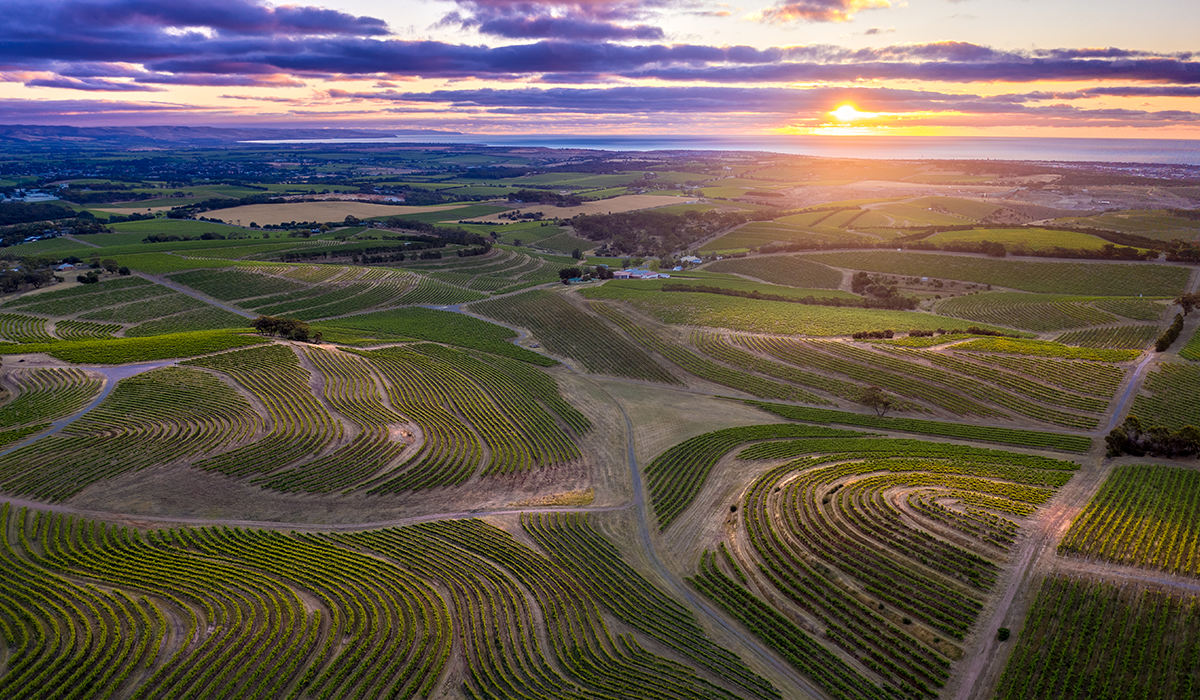Australian wine regions have legally controlled borders, but within those boundaries, variations in geology, soil, climate, elevation and aspect can create pockets of individuality that are reflected in the wines made – an expression of terroir, in other words. While those sites and subregions may take time to be officially recognised, that’s not slowing down independent research by growers and makers in McLaren Vale. Today, a project that is almost a decade and a half old is yielding results that could see us better understand the complex nuances of the region.
In Australia, we’re unlikely to ever have the level of definition that France’s Burgundy has, where vineyard sites were intimately mapped many generations ago and enshrined in appellation law in the 1930s. That delineation was informed by hundreds of years of viticulture that had identified distinctive climates – defined by macroclimate, geology, aspect and elevation – by the Middle Ages.
Australia’s Geographical Indicators (GIs) – from zones down to regions and further magnified down to subregions – are still a comparatively broad-brushstrokes affair. For example, Tasmania has its wine-growing areas officially lumped together, limited only by the island state’s coastline, while the Adelaide Hills boasts two subregions, though its heterogeneity suggests many more are needed.

Neither region has the continuous winegrowing practices of more historic ones, with early grape-growing abandoned long ago, and the baton not picked up until the latter half of the 20th century. Without the meaningful presence of established vineyards, it’s unsurprising there’s no rush to further classify the territory.
However, with generations of makers, a profound resource of old vines, major geological surveys and evidence of territorial variations in the glass, it’s surprising that McLaren Vale still lacks inter-regional borders. That’s something that’s likely to soon change, if unofficially, with the McLaren Vale Grape Wine and Tourism Association (MVGWTA) positing 19 distinctly individual districts.
“We had this wonderful geology map that was released in 2010,” says Michael Fragos, chief winemaker and general manager of Chapel Hill. “And it reinforced something that we kind of knew – that McLaren Vale was one of the most geologically complex wine regions in the world, with 40 different geological units, ranging from 10,000 to 550 million years old.”

The Districts Working Group was established in 2010 by Dudley Brown (Inkwell), who was then the chairman of the McLaren Vale Grape Wine and Tourism Association, after initiating the development of the map with journalist Philip White and geologists Jeff Olliver and Wolfgang Priess, based on geologist Billy Fairburn's research. The districts group consists mainly of winemakers and viticulturists. “We spent a lot of time in the region visiting, walking through vineyards and then came up with a proposal of the 19 individual districts,” says Fragos (who is the chair of the Districts Working Group). “And that was based on geology, soil, climate, topography…It wasn’t just geology.”
That research ultimately needed to be tested on the tasting bench, as the variations must present in the wines to be relevant. “We started to blind taste each blend of each district separately,” says Fragos. “We've been capturing this sensory data annually since 2010…It's now sort of a welcome to vintage event…We request one-year-old shiraz wines…because shiraz is planted extensively in every district.”
Wines lacking sufficient ripeness, or those overripe or occluded by new oak are not included. A blend to represent each district is made and tasted blind both in a traditional way, and then again but calibrated against a control wine. “In the last couple of years, we've tried to use some more scientific sensory analysis methods,” adds Fragos. “It's a more quantitative tasting method to capture and analyse the information.”

Over the years, the characteristics of the districts started to become apparent, though Fragos stresses that they have taken a patient view. “We could have gone out and trumpeted all those 19 districts back then,” he says. “But for us, it was about taking the time…Let's make sure that we're comfortable that there are differences. This isn't about quality or a cru system. It's purely to say, we've got this region, and it's wonderfully diverse.”
The data is still incomplete, though the project will continue to seek more samples each year. Up to half a dozen districts have shown recognisable character threads, and that’s not just about flavour, as some of the major signifiers were reflected in tannin type and quantity, along with texture, says Fragos. “We're able to say there are districts where there are consistent characters between many different vintages, which is really exciting.”
The results of the tastings are openly shared, and beyond the educational value for the wine buying trade and wine drinkers, the benefit to winemakers for isolating fruit and tannin profiles in pursuing a style or building a wine through blending is proving invaluable. The resource is also a powerful tool for guiding planting decisions.
“We had an information session a few weeks ago,” Fragos concludes, “and we had more than 70 grape-growers and winemakers there. The support for the project was quite unanimous...It was great that everyone sees the value in it. And, for us, it's a community project as well. It's not just a wine project, it's a community-building project.”
Image credits: McLaren Vale Grape Wine & Tourism Association, Duy Huynh/DUYDASH and Chapel Hill.



